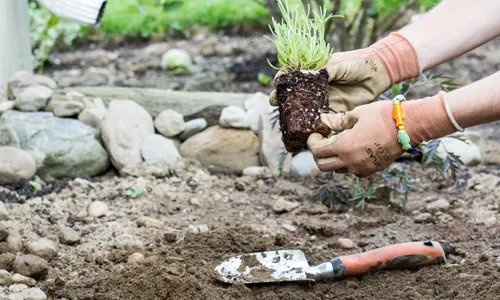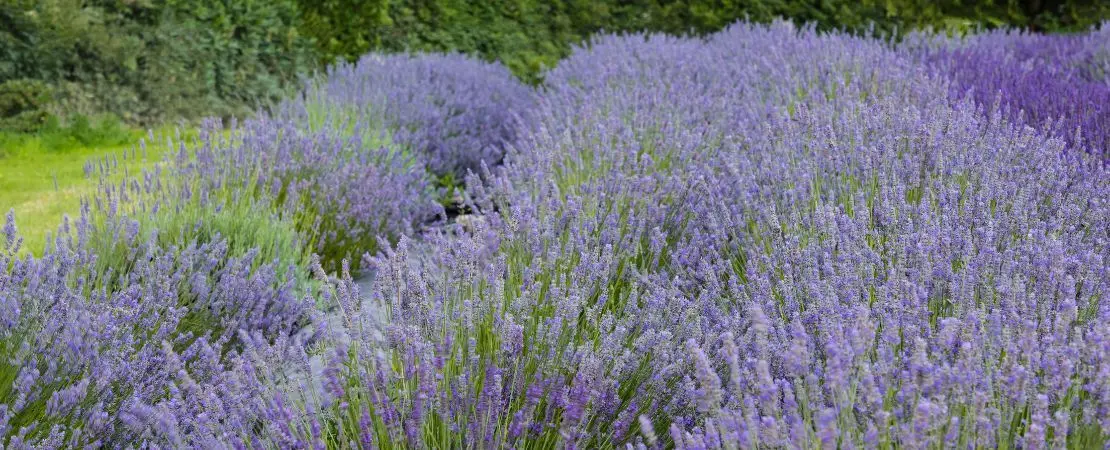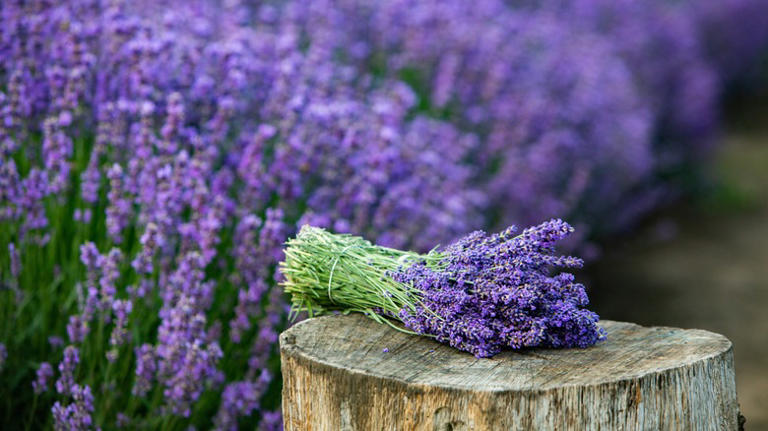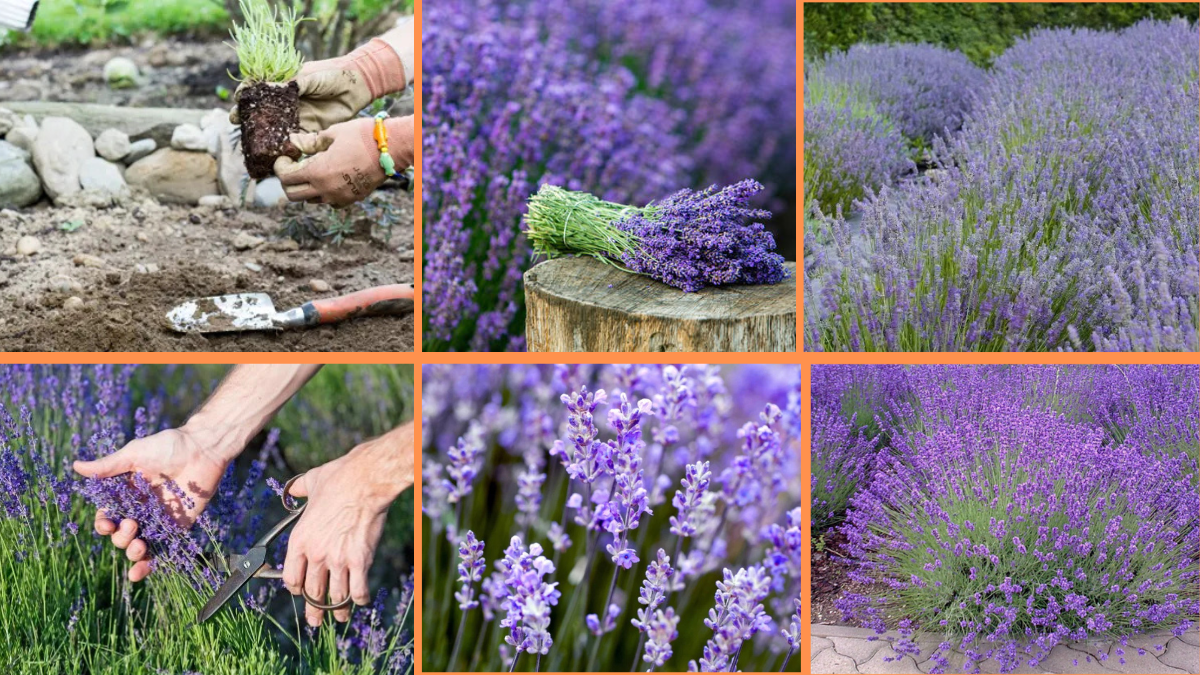If you’ve ever dreamed of walking through a sun-drenched garden filled with the calming scent of lavender, you’re not alone. Lavender is one of the world’s most beloved garden herbs — cherished for its soothing fragrance, elegant purple blooms, and incredible versatility in both the garden and home.
The good news? It’s surprisingly easy to grow! Whether you’re planting in a backyard border, a cottage-style flower bed, or simple containers on a sunny balcony, this guide will walk you through how to start growing lavender successfully, step by step.

Why Grow Lavender?
Before we get our hands in the dirt, let’s appreciate why this plant deserves a place in your garden:
- Fragrant Blooms: Fills your outdoor space with a relaxing, herbaceous scent.
- Pollinator-Friendly: Attracts bees, butterflies, and beneficial insects.
- Drought-Tolerant: Thrives in hot, dry conditions with minimal watering.
- Low Maintenance: Minimal pest and disease issues.
- Versatile Uses: Ideal for borders, containers, herb gardens, and even home decor, teas, and oils.
Popular Lavender Varieties to Grow
While most people recognize the classic lavender look, there are actually several varieties — each with its own characteristics and preferred growing conditions.
| Variety | Features | Best For |
|---|---|---|
| English Lavender (Lavandula angustifolia) | Sweet fragrance, cold-hardy | Cooler climates, culinary use |
| French Lavender (Lavandula dentata) | Serrated leaves, mild scent | Warm, mild winters |
| Spanish Lavender (Lavandula stoechas) | Distinctive ‘rabbit ear’ bracts | Mediterranean-style gardens |
| Lavandin (Lavandula x intermedia) | Large spikes, intense fragrance | Dry, sunny gardens |
Tip:
If you’re a beginner, start with English lavender — it’s the most forgiving and widely available.
Best Time to Plant Lavender
The ideal planting time depends on your climate and whether you’re using seeds or nursery-grown plants.
- Nursery Plants or Cuttings: Plant in early spring or early fall, so roots establish before extreme temperatures arrive.
- Seeds: Start indoors 10-12 weeks before the last expected frost. Lavender seeds can be slow to germinate, so patience is key!
Choosing the Perfect Spot
Lavender is a sun-loving plant that thrives in tough conditions. Here’s what it needs to flourish:
- Full Sun: At least 6-8 hours of direct sunlight daily.
- Well-Draining Soil: Lavender hates wet feet. Sandy, slightly rocky soil is perfect.
- Air Circulation: Reduces fungal issues and encourages healthy growth.
Ideal Soil pH:
6.5 to 7.5 — slightly alkaline. If your soil is acidic, mix in some garden lime before planting.

How to Prepare the Soil
Even the hardiest plants appreciate good soil prep. Follow these steps for the best results:
- Loosen soil to a depth of 12-15 inches.
- Mix in sand, gravel, or perlite to improve drainage.
- Add a small amount of organic compost (but don’t overdo it — lavender prefers lean soil).
- Work in a handful of lime if your soil is acidic.
Pro Tip:
If your soil is heavy clay, plant lavender in raised beds or containers to avoid root rot.
How to Plant Lavender
Whether you’re planting nursery starts, cuttings, or seeds, here’s how to do it right:
Planting Nursery Plants or Cuttings:
- Dig a hole twice the width of the root ball.
- Position the plant so the top of the root ball is level with the soil surface.
- Backfill, firm gently, and water well.
- Space plants 12-24 inches apart depending on the variety.
Sowing Seeds:
- Sow seeds on the surface of a seed-starting mix.
- Lightly cover with a thin layer of soil or vermiculite.
- Keep soil moist but not soggy.
- Place in a warm spot with indirect sunlight.
- Germination can take 2-4 weeks.

Watering and Feeding Lavender
Lavender’s drought tolerance makes it a low-maintenance gem, but good watering habits are still important:
- New Plants: Water regularly for the first few months while roots establish.
- Established Plants: Water only when the soil is completely dry — typically every 2-3 weeks in summer.
Fertilizing:
Avoid rich, nitrogen-heavy fertilizers. A light feeding with compost or organic all-purpose fertilizer in spring is usually enough.
Pruning Lavender for Health and Beauty
Regular pruning keeps lavender plants healthy, compact, and bursting with blooms.
When to Prune:
- In early spring: Remove dead wood and shape the plant.
- After flowering: Trim back spent flower stems and about one-third of the foliage.
Tip:
Never cut into old, woody stems — they struggle to produce new growth.

Overwintering Lavender
Lavender is perennial in USDA zones 5-9. In colder climates:
- Mulch lightly with straw or leaves after the first frost.
- Grow tender varieties like French or Spanish lavender in containers you can bring indoors during winter.
Common Lavender Problems and Solutions
Though tough, lavender can encounter a few issues:
| Problem | Cause | Solution |
|---|---|---|
| Root Rot | Overwatering, poor drainage | Improve soil drainage, reduce watering |
| Leggy Growth | Insufficient sunlight | Move to a sunnier location |
| Powdery Mildew | Poor air circulation | Prune for airflow, avoid overhead watering |
| Yellow Leaves | Over-fertilizing or overwatering | Cut back on both |

Propagating Lavender
Want more lavender for free? It’s easy to propagate by cuttings:
- In late spring, take 3-4 inch softwood cuttings.
- Strip the lower leaves and dip the cut end in rooting hormone.
- Plant in a pot with sandy, well-draining soil.
- Keep in a warm, bright spot out of direct sun until rooted (about 4-6 weeks).
Enjoying and Using Lavender
Lavender isn’t just for the garden — its uses are endless:
- Cut Flowers: Fresh or dried in bouquets and wreaths.
- Herbal Sachets: Keeps closets and linens smelling sweet.
- Culinary Uses: Flavor teas, cakes, syrups, and salads (use English lavender for food).
- Essential Oils: Home-distill for natural remedies and beauty products.
Fun Fact:
Ancient Romans used lavender to scent their bathwater — hence the name from the Latin lavare, meaning “to wash.”

Final Thoughts
Lavender is one of those wonderful plants that rewards minimal effort with maximum beauty, fragrance, and charm. By choosing the right variety, giving it sun-soaked, well-draining soil, and keeping watering light and occasional, you’ll enjoy season after season of purple blooms and calming scents.
So roll up your sleeves, grab a pot or patch of garden, and start growing your own little slice of Provence this year — your future self (and the local bees) will thank you.



